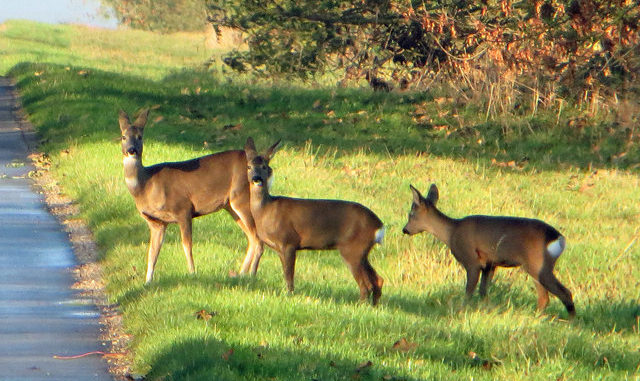
Police are urging motorists making essential journeys to take extra care on North Yorkshire’s roads after several deer were hit and killed.
The warning comes after a number of collisions that sadly resulted in the deaths of wild animals.
At 7am on Saturday, North Yorkshire Police officers on patrol came across a badly injured deer at the side of the road on the A19 south of Thirsk.
And a short time later, at 7.10am, colleagues from the Highways Agency reported a deer had just been hit by a vehicle on the A1(M) near junction 51, Leeming Bar.
Officers attended to assist, and a rolling road-block had to be put in place.
In another incident in North Yorkshire, a member of the public rang police reporting a young deer in the middle of Seamer Road, Scarborough, which had been hit by a car.
Very sadly, in all three cases, the animals’ injuries were not survivable.
A spokesperson for North Yorkshire Police said: “It’s possible that, with quieter traffic due the coronavirus restrictions, wildlife is less likely to avoid roads. So we’re asking people to take extra care on their essential journeys – always expect the unexpected, especially at night and on roads through rural areas.
“In particular, when you see deer warning signs or are travelling through a wooded area, check your speed, stay alert, and be prepared to stop.
“If your headlights are on, use full-beams when you can, but dip them if you do see a deer, as they may ‘freeze’. More deer may follow the first one you see, so keep vigilant.
“These incidents also highlight the risk of making unnecessary journeys – you could be involved in a collision, even through no fault of your own, which puts a strain on emergency service resources that could be focused on fighting COVID-19.”
The highest-risk times for deer collisions are from sunset to midnight, and the hours shortly before and after sunrise. According to Highways England, collisions also tend to peak around May as deer search for new territories.
The spokesperson added: “If you see an injured deer on the roadside, pull over at the next safe place, and call the police on 101, or 999 if the situation means lives could be at risk. We will deal with road safety issues and officers will be able to determine the best course of action for the animal if it is still alive.”
If you hit a deer while driving, your priorities, in this order, are:
- Keep yourself and anyone with you as safe as you can
- Park your car in the safest place with hazard lights on
- Call an ambulance if human injuries warrant it
- Call the police, giving as precise a location as you can
Don’t approach live deer – they may hurt you, or run across traffic causing another collision.


Be the first to comment